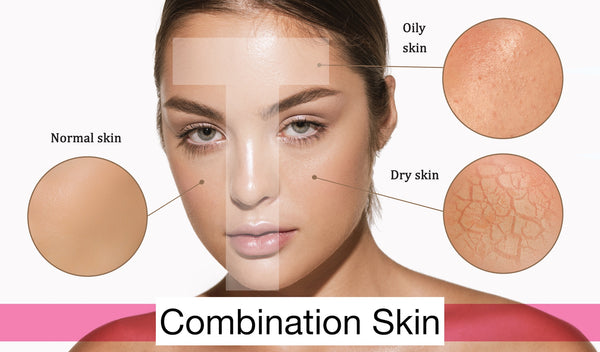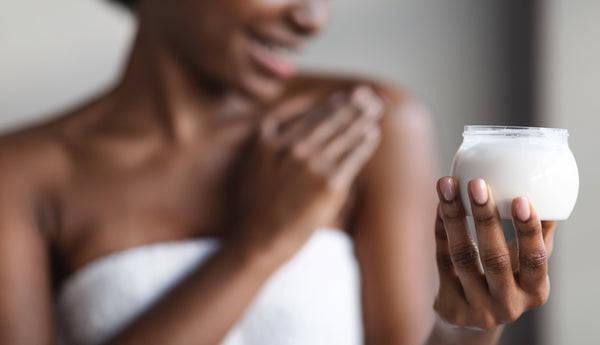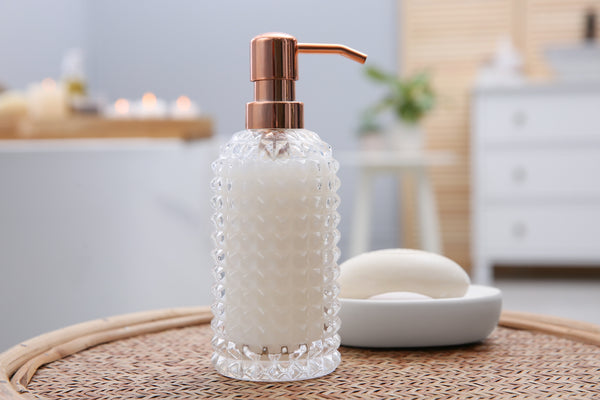What Causes Thin Skin and How to Treat It

The aging process affects all parts of the body, with skin changes often being the most noticeable. One common occurrence in aging adults is the development of thin skin. Since the thickness of the skin affects overall appearance, patients seek treatment to improve their skin texture and thickness.
The first step is to understand why skin thinning occurs, then talk to an aesthetics specialist about thin skin treatment options to improve the skin.
What Is Thin Skin?
Skin thinning is most noticeable in the face, hands, and arms. When this condition occurs, it often results in more visibility through the skin. For example, a person with thin skin might be able to see underlying tendons, veins, capillaries, and bones under the skin's surface.
Additionally, thin skin tends to have a fragility that makes it prone to bruises, breaks, or tears more easily. You might notice that you have skin that cuts easily. Fragile skin is the reason why thinning skin is often referred to as friable skin or crepey skin since it has the appearance of tissue paper.
What Is the Cause of Thin Skin?
The skin consists of multiple layers, with the dermis in the middle section. The dermis makes up 90% of the thickness of the skin and consists of elastin and collagen. It is a fibrous, thick tissue in the early years of life, creating the elasticity, flexibility, and strength that contribute to a youthful appearance.
Over the years, the dermis begins to thin. Thin skin is most often associated with aging, but other reasons could be the underlying cause of thin skin:
- Aging: As you get older, the production of collagen decreases. When collagen production goes down, the skin is slower to repair itself – resulting in thin skin. A decrease in collagen can also result in the development of sagging, wrinkles, and moisture loss.
- Genetics: Researchers are still working to understand how genetics contribute to skin thinning. Some people seem more prone to this skin condition, which might result in the faster development of thin skin. In severe cases, it's known as Gottron Syndrome, a rare genetic condition that causes premature aging and unusually fragile skin.
- Lifestyle: Your daily habits might speed up the damage to your skin, resulting in aging thin skin. Lifestyle factors that affect your skin include alcohol consumption, smoking, lack of exercise, and poor diet. For example, a diet high in sugar and refined carbohydrates might increase the risk of skin thinning compared to a diet high in whole foods, fruits, and vegetables.
- UV Exposure: When the skin is exposed to UV rays from the sun, it can result in damage that speeds up the signs of aging. One day of sun exposure won't likely make a big difference. But repeated sun exposure over many years starts to add up. One reason why you might notice thinning skin on the hands, face, and arms is that these areas of the body aren't often covered in clothing when you are outside.
- Certain Medications: Using specific over-the-counter or prescription medications can contribute to skin thinning. These medications include oral and topical corticosteroids, blood thinners, aspirin, ibuprofen (Advil), naproxen (Aleve), and other types of non-steroidal anti-inflammatory drugs (NSAIDs).

Thin Skin Treatment: Can Thin Skin Be Thickened?
If you are noticing thin skin on your face or any other part of your body, then you are likely looking for solutions: what to do about thin skin? One of the first questions a person might ask when talking to an aesthetics specialist is, "how can I stop my skin from thinning?" Not only do you want to improve the appearance of your skin immediately, but there is also a desire to slow down skin thinning in the future.
The good news is that modern treatments are available to help with skin thickening. While these treatments are most often used on the face, you can also learn how to thicken skin in arms, hands, and any other areas of the body affected by skin thinning. Here is an overview of options you might be considering if you are looking for thin skin treatments:
Microneedling
This skin rejuvenation treatment can be helpful for many different types of skin conditions relating to aging. The skin is numbed with a topical gel or cream during the treatment session. Then, a handheld device is used to pierce the skin with needles.
Causing tiny injuries on the surface of the skin and into the deeper layers results in pinpoint bleeding. Then, the body goes to work to repair the skin and boost collagen production. As a result, many patients see an increase in suppleness and skin elasticity.
Laser Resurfacing
Another way to stimulate the repair function in the skin is to use laser treatments. These thin skin treatments work remarkably well, but you need to plan for a longer recovery time compared to other types of in-office treatments. Ablative lasers are the strongest and create the most dramatic results. On the other hand, non-ablative lasers are a bit gentler but produce moderate results. The benefit of non-ablative treatments is that you can reduce the recovery time after treatment.
Another type of treatment in the laser category is known as intense pulse light (IPL), also known as a photo facial. This treatment pus a specific light wavelength onto the skin. This treatment requires multiple sessions to produce results and can help with collagen boosting to reduce the appearance of aging.
Injectables and Dermal Fillers

When there is a loss of volume in the skin, you might consider a variety of skin and dermal fillers to boost the suppleness of the affected area. These injections offer the benefit of giving the skin volume to create a plumper, more youthful appearance. Most of the time, fillers are used on the face. But they can also be injected into the hands if desired.
The benefit of injectables is that most produce immediate results, and you will enjoy the benefits for up to two years. But other types of fillers take a few months and multiple treatments before you'll start seeing results. The best solution is to talk to your doctor to determine the ideal fillers for your unique needs.
Cream for Thinning Skin
Another option to consider is the type of skincare products you use at home. For example, daily use of a quality cream for thinning skin can produce noticeable results to correct issues with thin skin on the face over time. The best products, such as MD Glam, include a full skincare regimen with advanced formulas for cleansing, moisturizing, strengthening, and protecting the skin.
If you are going to use skincare products to help improve the appearance of aging, thin skin, then make sure to check the ingredients and talk to your doctor. When you search online to learn how can I stop my skin from thinning, a variety of products will come up in the search results. But these products aren't all created equal. It's important only to use the best products with quality ingredients so that you can achieve the results you desire for improving friable skin.
At Home Treatments: What to Do About Thin Skin
Can think skin be thickened with at-home treatments? Yes! The most common suggestion from a skincare expert starts with the skincare products you use at home. Not only can skincare creams help with the overall appearance of the face, but these products are also a solution if you want to know how to thicken the skin on your arms and hands.
In addition to using skin thickening creams, also ask your doctor about how can thin skin be thickened with other at-home remedies. When you understand the cause of thin skin, you can adjust your daily habits to create a lifestyle that reduces the risk of thinning skin on your hands, face, arms, and more.
Two other at-home thin skin treatments include the use of topical retinoids and vitamins for thin skin and easy bruising:
- Topical Retinoids: These retinoids are a form of thin skin vitamins applied to the skin's surface instead of being taken internally. Retinoids are medications derived from Vitamin A and can be effective in reducing the signs of aging. Keep in mind that there are potential side effects, especially when using retinoids for extended periods: skin irritation, itching, scaling, redness, and dryness.
- Thin Skin Vitamins: Another option is to use vitamins for thin skin and easy bruising. If you have visibly thin skin or skin that cuts easily, then consider an inside-out approach by adjusting your diet and adding supplements into your daily routine. Recommended vitamins might include omega-3 fatty acids, collagen peptides, gamma-linolenic acid (GLA), and vitamin C.
No matter the type of at-home thin skin treatments you plan to use, it's always best to talk to your doctor. Not only can you get personalized recommendations, but you can also avoid common issues that might occur with at-home treatments. For example, retinoids shouldn't be used in certain circumstances. Or, your doctor can offer recommendations about the frequency and dosages of your vitamins and supplements.
Dietary Considerations for Healthy Skin
Essential components for healthy skin are found in oils, protein, fruits, and vegetables. An ideal diet to promote good skin health and reduce the need for thin skin treatments focuses on nutrient-dense whole foods. Stay away from empty calories, such as processed foods that come in a box or can at the grocery store.
Meats, beans, and other clean sources of protein-contact amino acids are important for rebuilding and repairing work throughout the body. Adding good protein to your diet is a great way to support skin health and overall health as well.
Additionally, fruits and vegetables are highly recommended because they contain health-promoting antioxidants. Choose a variety of colors to create a well-balanced diet to promote healthy skin. Vitamin C is one of the most notable antioxidants for skin improvement because it can have a positive impact on collagen production.
You can get these antioxidants through real ingredients in your meals or use supplements with antioxidants. Another option is to use antioxidants topically in the form of a Vitamin C serum applied topically to help with thinning skin on hands, face, arms, and more.
Important Tips for Preventing Thin Skin
 Certain types of skin damage from sun exposure can't be reversed. But you can slow premature aging with a proactive approach to protecting your skin right now and in the future. The steps you take today will have a noticeable difference in the quality of your skin in the coming years.
Certain types of skin damage from sun exposure can't be reversed. But you can slow premature aging with a proactive approach to protecting your skin right now and in the future. The steps you take today will have a noticeable difference in the quality of your skin in the coming years.
Prevention tips from the American Academy of Dermatology (AAD) include:
- When spending time in the sun, use sunscreen on all skin that isn't covered by clothing
- Wear clothing to protect the vulnerable parts of your skin, such as a hat, long sleeves, and gloves
- Never use tanning beds
- Stop smoking
- Reduce or eliminate alcohol consumption
- Maintain a well-balanced diet
- Prioritize exercise to boost immune function
- Use gentle motions when washing your skin
- Invest in quality skincare products and use them daily
- Always use moisturizer to maintain a supple appearance
Professional Solutions from an Experienced Aesthetics Expert
Even though thinning skin is a common condition that occurs in the later years of life, you don't have to live with these skin problems. However, if you are ready to start using thin skin treatments, then it's time to schedule a consultation with a doctor who specializes in skin care and cosmetic services.
The ideal approach is to use multiple in-office and at-home treatments to promote the healthiest skin possible. For example, don't neglect your daily skincare routine, even if you are budgeting for micro-needling or laser skin resurfacing. A product such as MD Glam goes hand-in-hand with other thin skin treatments.
For more information about these treatments and other plastic surgery options, book a consultation with Dr. Cat Begovic. She is a board-certified surgeon and offers years of experience treating thinning skin and other cosmetic concerns. Reach out to learn more about the ideal treatments for your unique situation.









